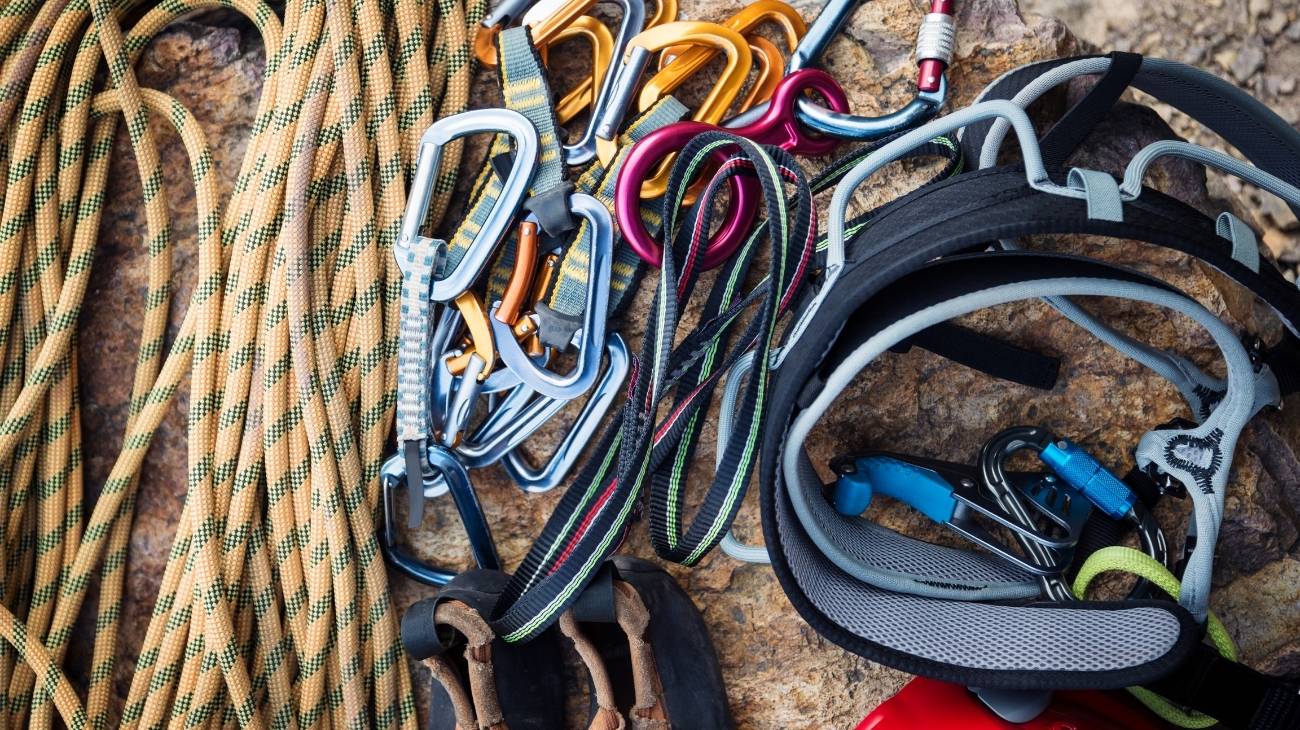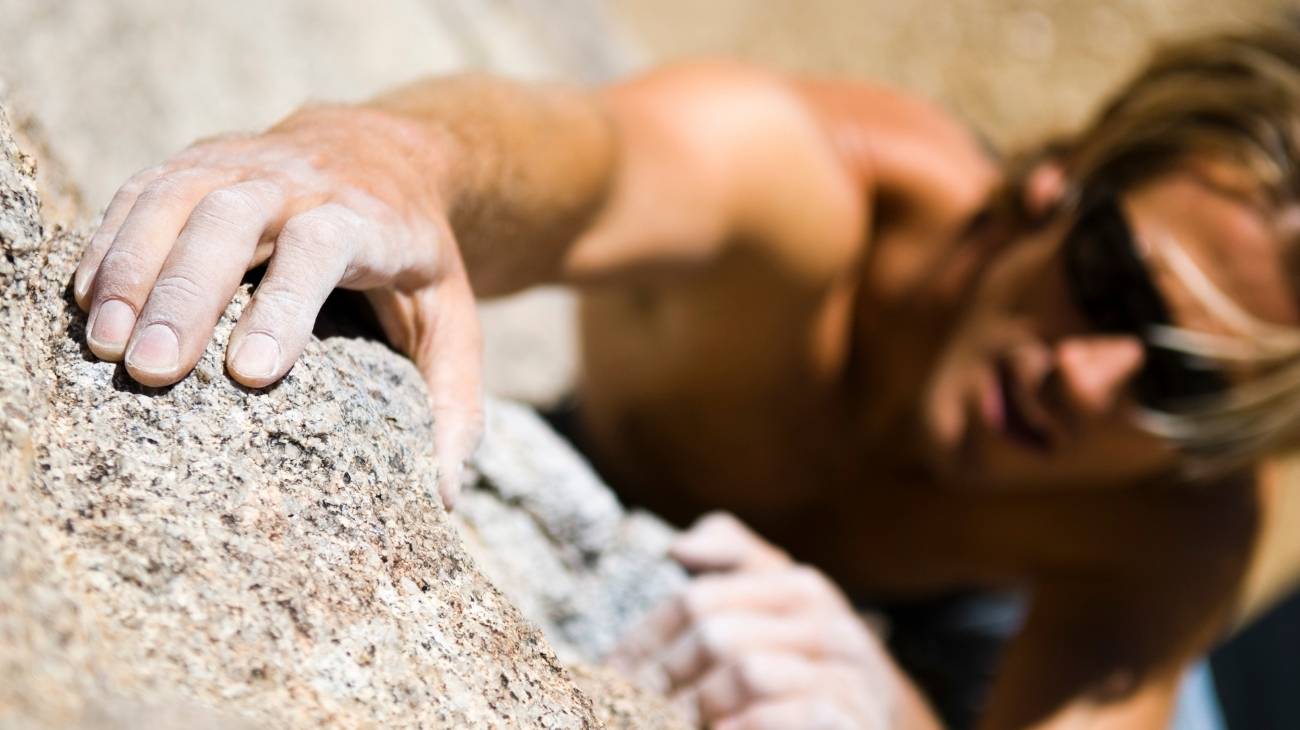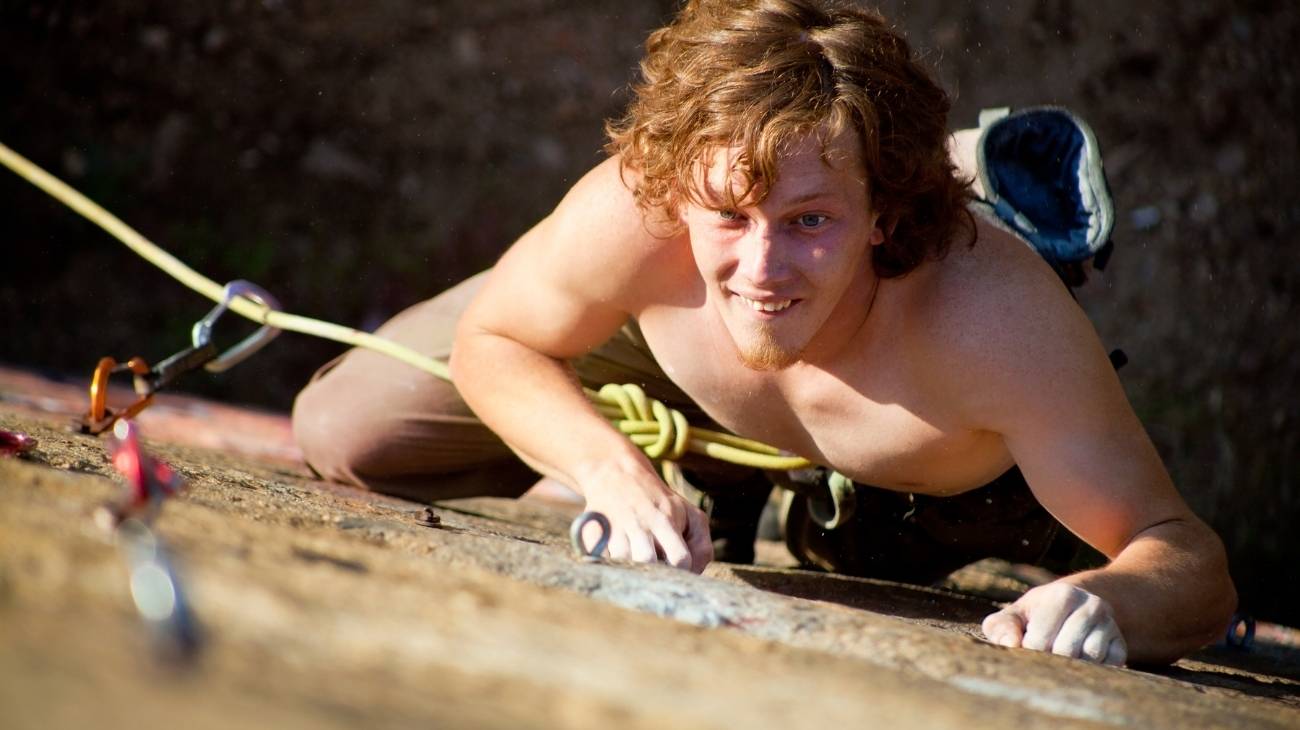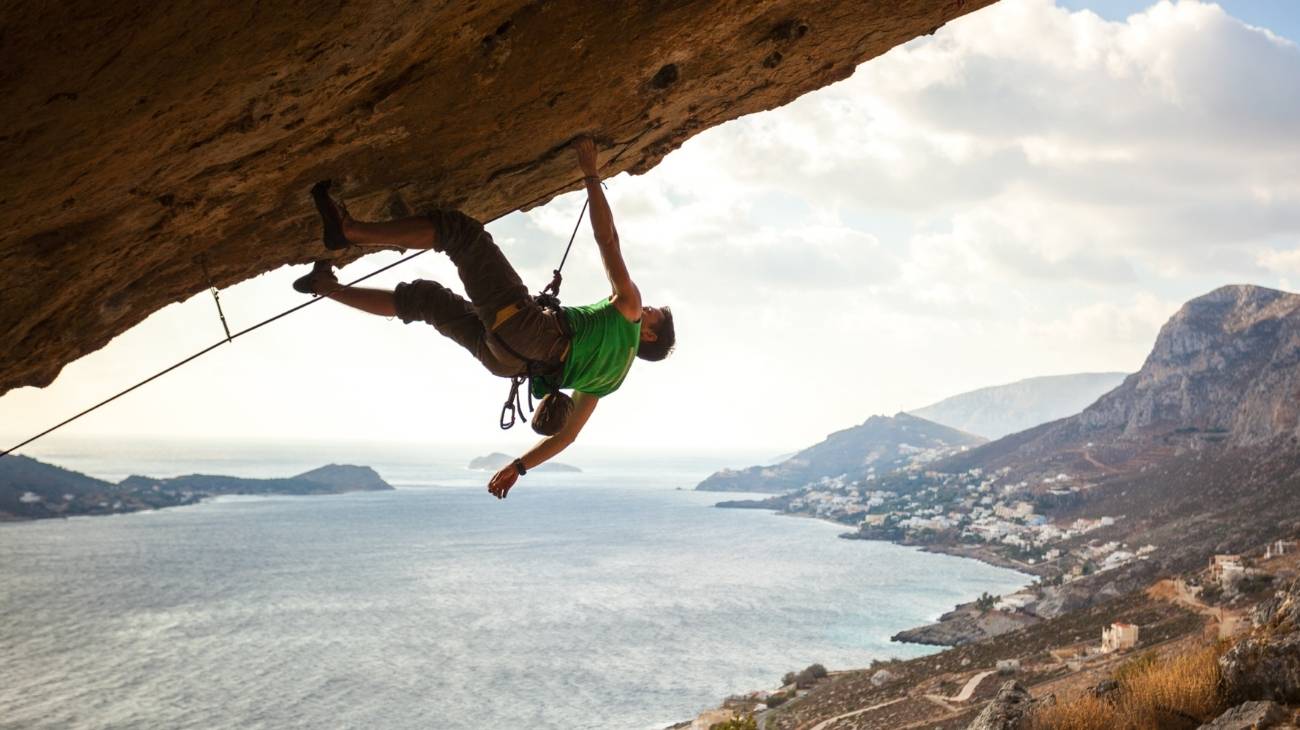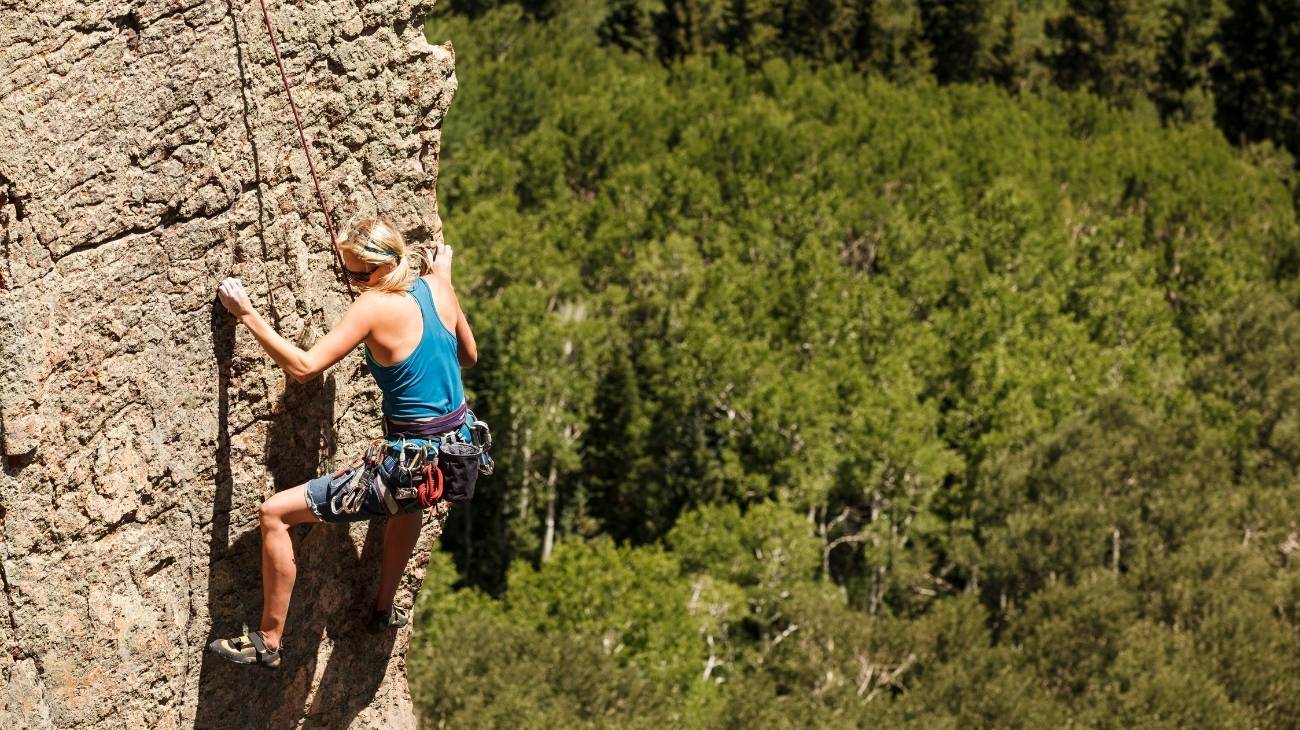Interesting studies have confirmed that climbers often suffer sports injuries to the same parts of the body. Knee injuries are no exception, as it is one of the parts of the body most prone to trauma or injury from overuse or falls.
Some rock climbing techniques require pushing on the knee at the same time as turning. All this generates maximum rotations, repetitive strain and unintentional slippage, all of which lead to knee injuries in climbers. Here's what the most common ones are and how to treat them with the RICE therapy.
What are the most common types of knee injuries when rock climbing?
Knees are part of the most complex systems in our body. They have the ability to function as a hinge that flexes and extends, but can also rotate. It is made up of the patella, tibia and femur, between the latter two are the menisci.
It is important to talk about the main knee injuries in climbers, so that you are aware of them and can prevent them:
Meniscus tear
This is the most common knee injury in climbers, as it is caused by twisting or turning the knee with excessive force, leaving the weight on one foot. This twisting can be caused by semi-flexion during a rock climbing mechanism, where the meniscus is pinched between the femur and tibia.
It can also be caused by squatting and the meniscus is worn over time. When the meniscus tear is caused by these types of movements it is known as a spontaneous twist, which are mostly associated with age and are of the degenerative type. This will cause severe pain, locking of the knee, impaired bending and associated joint effusion.
Knee sprain
Knee sprains in rock climbing are caused by trauma, bad falls, blows or human error during sport. Sprains are categorised as the most serious, but least common type of climbing injury.
The main cause is the bending or twisting of the knee beyond the anatomical limits of the joint, while the foot is resting firmly on the ground. The most common symptoms are severe pain, inability to function, swelling, stiffness, instability when walking.
Patellar dislocation
At some point in their sporting life, climbers suffer a dislocated or dislocated kneecap, which is why it is one of the most common dislocations. The kneecap is a triangular bone that protects the knee, making it possible to bend and extend the knee.
Dislocation is caused by trauma, twisting or falling on the leg, where the kneecap moves or slips out of its socket. As a result, the climber will feel pain around the kneecap, swelling, limitation of movement and visible displacement of the kneecap.
Fracture
A knee fracture occurs when the bones of the knee joint, such as the kneecap, femur, fibula and tibia,break or shatter. In general, it is a serious type of injury in climbers, but not one of the most frequent, caused by trauma, direct contusion on the knee and falls.
However, degenerative diseases such as osteoporosis are also a risk factor for knee fracture. The climber will experience pain, swelling, inflammation, tenderness, limitation of movement, leg deformity and inability to walk and move the leg.
Knee bursitis
Direct blows, frequent jumps and falls on the knee, as well as overloading and repetition of movements, are the most common risk factors for knee bursitis in climbing. This type of injury causes inflammation in the synovial bursa located near the knee joint.
This bursa contains the synovial fluid responsible for lubricating the joints so that tendon and ligament movements are easier. With knee bursitis, the climber will feel pain, stiffness, limitation of movement, limping, and inflammation of the synovial fluid.
Best products for the recovery of knee injuries in climbing and mountain sports
Bestseller
-
2 Knee Compression Sleeve (Black/Gray)
£17,50 -
2 Knee Compression Sleeve (Green/Navy)
£17,50 -
2 Knee Compression Sleeve (Pink/Bordeaux)
£17,50 -
2 Patella Knee Strap (Black/Gray)
£12,95 -
2 Patella Knee Strap (Green/Navy)
£12,95 -
2 Patella Knee Strap (Pink/Bordeaux)
£12,95 -
Microwave Wheat Bag for Back Pain Relief (Extra Large) (Hearts)
£25,50 -
Microwave Wheat Bag for Back Pain Relief (Extra Large) (Oxford)
£25,50 -
Microwave Wheat Bag for Back Pain Relief (Extra Large) (Sport)
£25,50 -
Microwaveable Wheat Bag for Pain Relief (Hearts)
£17,50 -
Microwaveable Wheat Bag for Pain Relief (Oxford)
£17,50 -
Microwaveable Wheat Bag for Pain Relief (Sport)
£17,50 -
Wheat Bag for Microwave Classic Bottle Shaped (Hearts)
£17,50 -
Wheat Bag for Microwave Classic Bottle Shaped (Oxford)
£17,50 -
Wheat Bag for Microwave Classic Bottle Shaped (Sport)
£17,50
How to apply the RICE therapy to treat knee injuries in rock climbing?
The RICE therapy is a very simple protocol recommended by doctors and specialists to treat minor first aid injuries. The aim is to reduce inflammation, relieve pain and speed up the healing process. One of the highlights of this method is that you can apply it at home for sports knee injuries. However, if the pain and swelling do not improve, the next step is to see a doctor.
Although it is less well known than RICE, today we want to tell you about the PRICE therapy and how to apply it as a first aid measure for knee injuries in climbing:
- Protection: Protecting your knee will help prevent the injury from getting worse. This can be achieved by using knee pads that immobilise the joint and help to accelerate the joint.
- Rest: Resting the knee is the second phase of the process to prevent the knee from getting injured and getting worse. Stop all activity in this area and avoid putting weight on it. Rest is contemplated within the first 24 to 48 hours of the injury.
- Ice: Applying ice to the injury has been shown to help reduce pain and swelling. Apply a cold gel-filled pack in 10-15 minute sessions to the knee with 1-2 hour rest intervals.
- Compression: You will now need to wrap the knee with a medical elastic bandage to prevent swelling. However, avoid making it too tight. If you notice any tingling, numbness or cold skin consult your medical specialist immediately.
- Elevation: Elevate your knee above the level of your heart with the help of pillows while lying down. This will help reduce pain, throbbing and swelling.
References
- Schöffl, V., Lutter, C., & Popp, D. (2016). The “Heel Hook”—a climbing-specific technique to injure the leg. Wilderness & Environmental Medicine, 27(2), 294-301. https://www.sciencedirect.com/science/article/abs/pii/S1080603215004676
- Lutter, C., Tischer, T., Cooper, C., Frank, L., Hotfiel, T., Lenz, R., & Schöffl, V. (2020). Mechanisms of acute knee injuries in bouldering and rock climbing athletes. The American journal of sports medicine, 48(3), 730-738. https://journals.sagepub.com/doi/abs/10.1177/0363546519899931
- Pardiwala, D. N., Rao, N. N., Anand, K., & Raut, A. (2017). Knee dislocations in sports injuries. Indian Journal of Orthopaedics, 51, 552-562. https://link.springer.com/article/10.4103/ortho.IJOrtho_229_17
- Majewski, M., Susanne, H., & Klaus, S. (2006). Epidemiology of athletic knee injuries: A 10-year study. The knee, 13(3), 184-188. https://www.sciencedirect.com/science/article/abs/pii/S0968016006000032
- Arden, N. K., Crozier, S., Smith, H., Anderson, F., Edwards, C., Raphael, H., & Cooper, C. (2006). Knee pain, knee osteoarthritis, and the risk of fracture. Arthritis Care & Research: Official Journal of the American College of Rheumatology, 55(4), 610-615. https://onlinelibrary.wiley.com/doi/abs/10.1002/art.22088
- Maitland, M. (1992). Injuries associated with rock climbing. Journal of Orthopaedic & Sports Physical Therapy, 16(2), 68-73. https://www.jospt.org/doi/abs/10.2519/jospt.1992.16.2.68
- Neuhof, A., Hennig, F. F., Schöffl, I., & Schöffl, V. (2011). Injury risk evaluation in sport climbing. International journal of sports medicine, 32(10), 794-800. https://www.thieme-connect.com/products/ejournals/abstract/10.1055/s-0031-1279723
- Woollings, K. Y., McKay, C. D., & Emery, C. A. (2015). Risk factors for injury in sport climbing and bouldering: a systematic review of the literature. British journal of sports medicine, 49(17), 1094-1099. https://bjsm.bmj.com/content/49/17/1094.short
- Addiss, D. G., & Baker, S. P. (1989). Mountaineering and rock-climbing injuries in US national parks. Annals of emergency medicine, 18(9), 975-979. https://www.sciencedirect.com/science/article/abs/pii/S0196064489804639
- Schöffl, V., & Winkelmann, H. P. (1999). Accident statistics at” indoor climbing walls”. Sportverletzung Sportschaden: Organ der Gesellschaft fur Orthopadisch-traumatologische Sportmedizin, 13(1), 14-16. https://europepmc.org/article/med/10407959




































